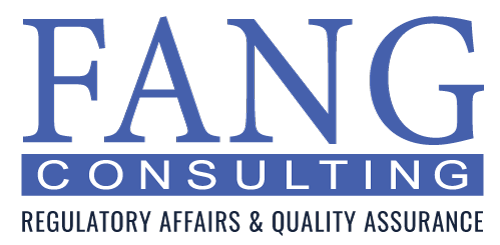
By Leslie Williams | May 4, 2021
Unless you’ve spent the past few years marooned on a small and completely unconnected desert island, you know that the new Medical Device Regulation (MDR) comes into full effect on May 26, 2021. This is sweeping legislation that will forever change the medical device landscape in the European Union, and the business practices and quality management systems of those manufacturers who want to continue marketing their devices in Europe.
The impact on the industry cannot be overstated. Since its adoption four years ago, MDR has spawned an army of regulatory consultancies and a flood of supporting documentation, all aimed at guiding medical device manufacturers through the transition – and with good reason. The MDR alone is comprised of 175 pages, 123 articles, and 17 annexes of detailed regulation, and the European Commission’s Medical Device Coordination Group (MDCG) has released many more hundreds of pages providing key updates and explaining how the new regulations should be applied in actual practice.
What do all these new regulations actually mean to a currently marketed legacy device? It depends. Some devices face a change in classification, some devices will need to perform a clinical evaluation and update their technical documentation, and all are subject to new surveillance practice requirements. There are many hurdles along the road to MDR compliance, and many have hypothesized that some legacy devices will be unable to remain on the market. But a successful transition is not impossible with a clear understanding of the new requirements and a solid strategy for implementation.
MDR Definition of a “Legacy Device”
It might be helpful to start with clarifying what the MDR considers a legacy device.
A legacy device is a medical device, implantable medical device or in vitro diagnostic device with a valid Medical Device Directive (MDD) and/or Active Implantable Medical Device (AIMD) certificate that is currently in commercial distribution with the intention to remain on market after the 2021 date of MDR application.
This means devices that have been manufactured, packaged, labeled, and distributed in full compliance with existing EU device directives and bearing a valid CE mark. All these existing regulations will remain in effect after the May 26 transition date, as MDR does not overturn any of these standards and requirements. It simply builds on that foundation.
However, all valid MDD certificates will expire May 26, 2024, four years from the original MDR date of application (if not before) and manufacturers still must comply with all requisites by May 2024 – including new post-market surveillance, market surveillance, vigilance, and device registration requirements – to remain on market after that date.
Moving Devices from MDD to MDR
While MDR doesn’t eliminate existing standards, it definitely introduces a major overhaul of the EU regulatory landscape. MDR is four times longer than MDD – it expands the definition of medical device to include new categories, introduces new General Safety and Performance Requirements (GSPRs), creates four new risk classes for in vitro diagnostic devices (IVDs), and has an entire section (Article 120) dedicated to defining what legacy devices need to do to remain compliant.
Article 120 caused many device manufacturers to breathe a collective sigh of relief when released, as it allowed some Class I devices with a valid MDD certificate and CE mark to remain on the market through May 2024 – with a few caveats:
- The device must have no significant changes to its design or intended use after May 26, 2021
- The device must continually meet all applicable general safety and performance requirements (GSPRs) laid out in Annex I (and document same)
- The manufacturer must demonstrate ongoing post-market surveillance
- The manufacturer or the authorized representative must complete a conformity assessment and issue a Declaration of Conformity by May 26, 2021
- If the device is sterile, a surgical instrument, or a device with a measurement function, the manufacturer must involve a notified body in the certification process
These allowances are not a get-out-of-jail-free card, but more of a safeguard against the removal of legacy devices from the market come the end of May. Class I legacy devices must still fully align their practices, labeling, surveillance, and documentation with the incoming regulation; manufacturers have simply been given a bit more time to assess and mitigate their regulatory gaps.
New Classes, New Risks
One big change ushered in with MDR is the up classification of some Class I devices to a higher risk category based on use, technical design, and manufacturing processes. This up-classification introduces a new requirement for notified body oversight and is intended to better align EU and US device classifications. This change applies to most invasive and implantable devices, software as medical device (SaMD), devices composed of substances or combinations of substances, and devices using tissue, cells, or nanomaterials.
For some up-classified devices, there is the option of renewing the MDD certificate if it is set to expire prior to May 26, 2021. This will allow the device to remain on the market while the manufacturer works to implement the new requirements and achieve MDR certification.
MDR also brings some products without a medical purpose under the new umbrella. Per Annex XVI, cosmetics, contact lenses, cosmetic implants and other beauty devices will be more tightly regulated than under previous legislation.
EUDAMED and the Unique Device Identifier (UDI)
One of the biggest changes to current practice is the establishment of a secure, web-based portal of information for medical devices. EUDAMED – the European Database on Medical Devices – will serve as the central repository for data shared between the European Commission and the national competent authorities. The intent is to strengthen market surveillance and increase transparency by providing competent authorities with fast and easy access to applicable regulatory information.
EUDAMED will employ six modules to track and filter data, one of which is the unique device identifier (UDI). The UDI is required for a device to register with EUDAMED, and registration is not due for legacy devices until the EUDAMED go-live date of May 2022, unless a device experiences a serious incident and/or issues a field safety correction report. In that situation, the legacy device MUST register with EUDAMED immediately or at the time of incident reporting.
EUDAMED employs a Basic-UDI, which is the main identifier for device information in the database, and a UDI-DI, which is the alphanumeric code identifying the manufacturer and the device. However, legacy devices do not require either of these to complete EUDAMED registration. Instead, legacy devices will be assigned a EUDAMED DI (equivalent to the Basic-UDI) and a EUDAMED ID (equivalent to the UDI-DI). The EUDAMED DI may be assigned by the manufacturer or EUDAMED, but the EUDAMED ID will always be generated by EUDAMED.
Pulling It All Together
There is a LOT to remember with these new regulations, and the changes have sent regulatory affairs staff into preparatory overdrive since adoption of the MDR in 2017. But the regulations are intended to improve device safety and help the competent authorities and regulatory agencies monitor device performance to prevent harm to patients. Companies with established and experienced regulatory teams should be able to manage the transition with ease, hopefully minimizing disruption in the availability of legacy devices on the European market.




